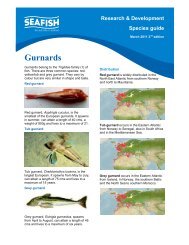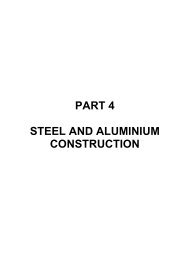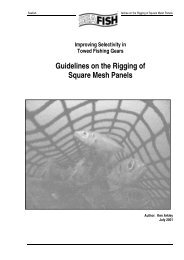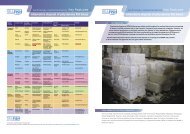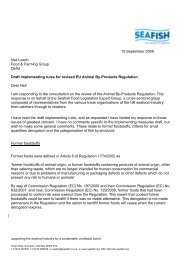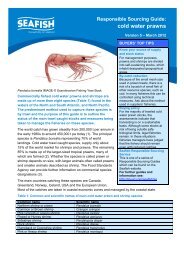Hydraulics - Seafish
Hydraulics - Seafish
Hydraulics - Seafish
You also want an ePaper? Increase the reach of your titles
YUMPU automatically turns print PDFs into web optimized ePapers that Google loves.
34<br />
The vanes are pushed out by centrifugal force, but also assisted<br />
by springs or pressurised oil from the system in some types of<br />
this pump.<br />
The pockets formed by the vanes, the side plates and the ring<br />
increase in volume from the inlet, which causes oil to be drawn<br />
in.<br />
As the rotor moves round, the pockets reduce in volume towards<br />
the outlet and the oil is forced out.<br />
Figure 41 shows an unbalanced vane type pump. It is called<br />
unbalanced because the high pressure on one side of the rotor<br />
causes a side thrust on the bearings in the opposite direction.<br />
Shaft<br />
Rotor<br />
Inlet<br />
Outlet<br />
Casing<br />
Sliding<br />
Vanes<br />
Figure41.<br />
O<br />
The output of the pumps shown so far cannot be varied<br />
except by altering the speed of the pump.<br />
The outlet of a pump of the vane type can be made variable by<br />
fitting a moveable circular ring as shown in Figure 42.<br />
Adjusting<br />
Screw<br />
To alter ring<br />
position<br />
Eccentricity<br />
Maximum<br />
Volume<br />
Screw<br />
Spring<br />
Ring<br />
Figure 42.<br />
<strong>Seafish</strong> Open Learning




